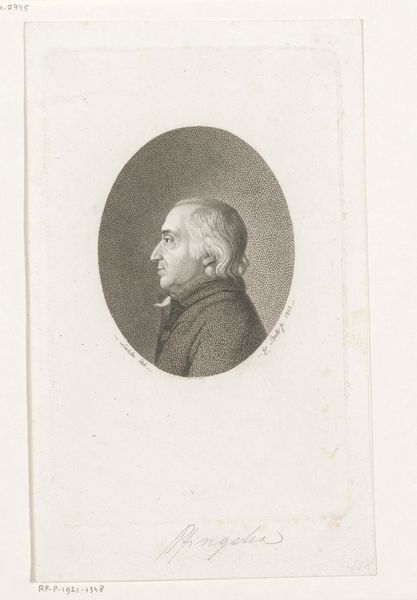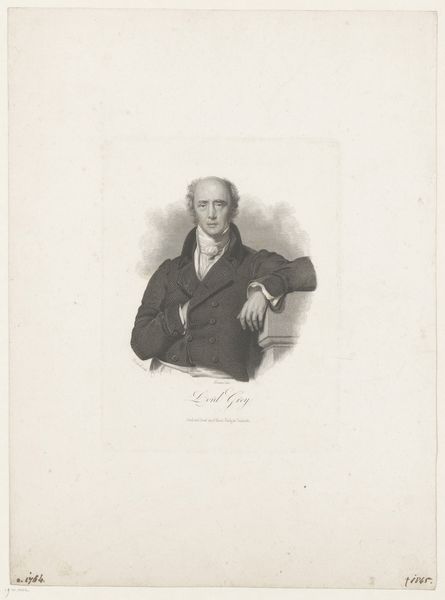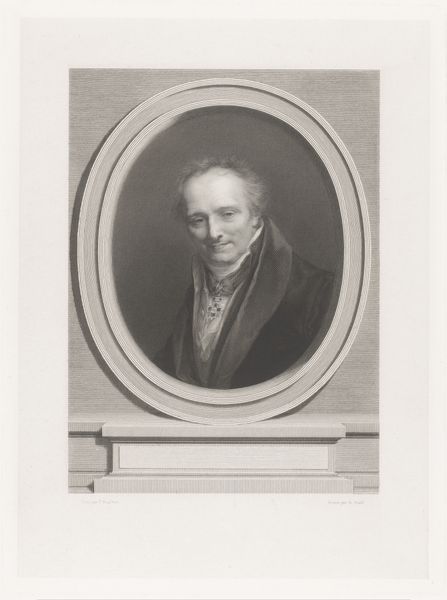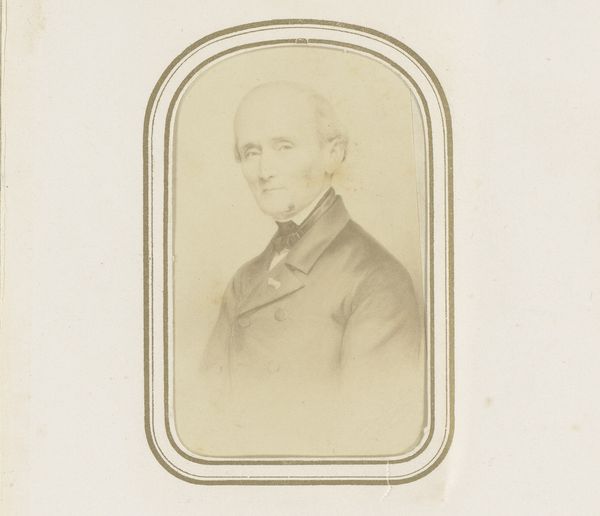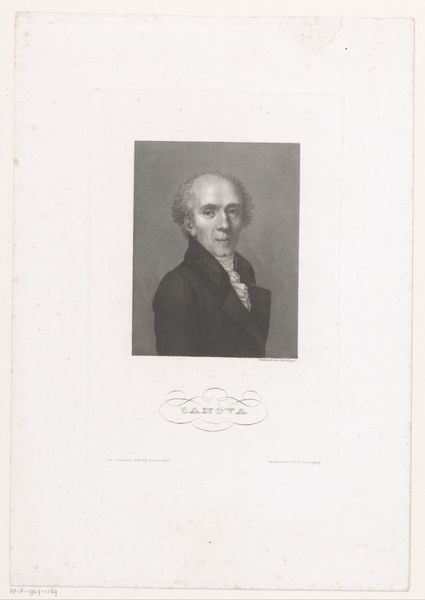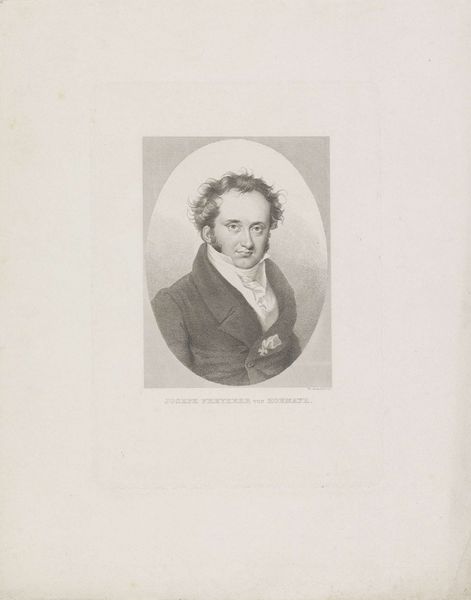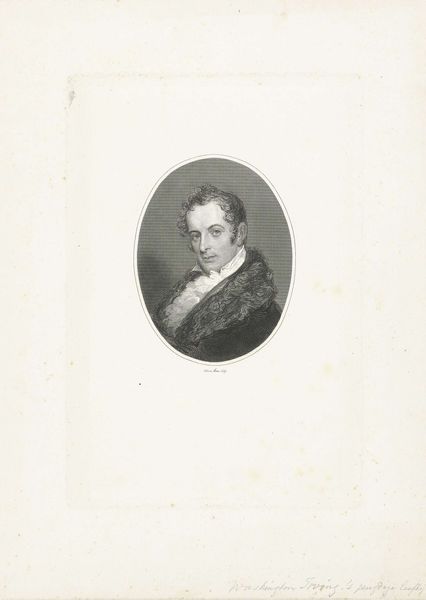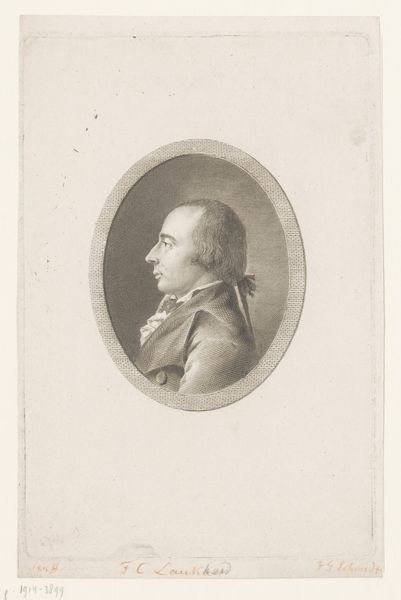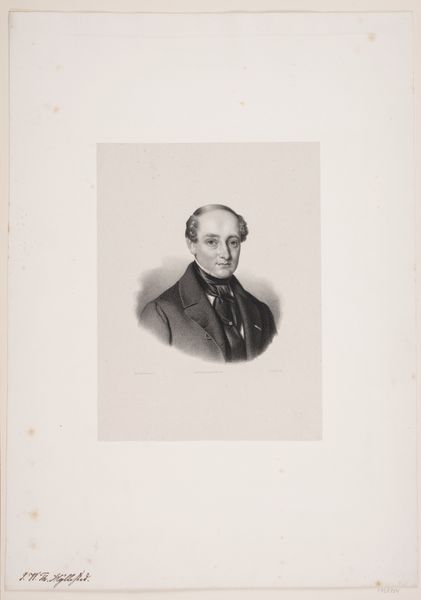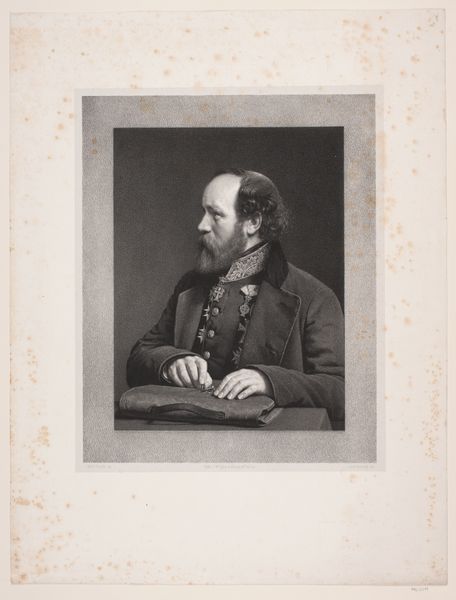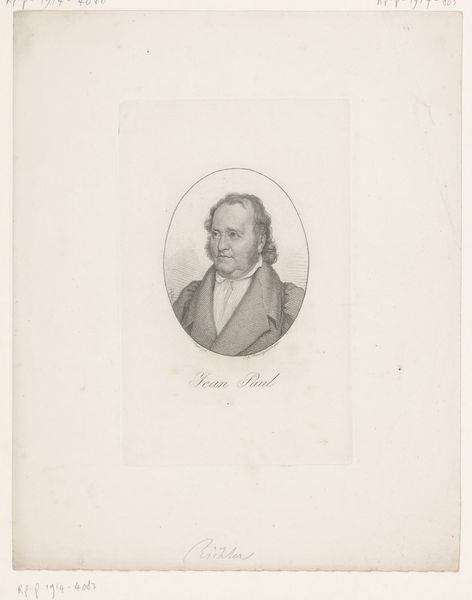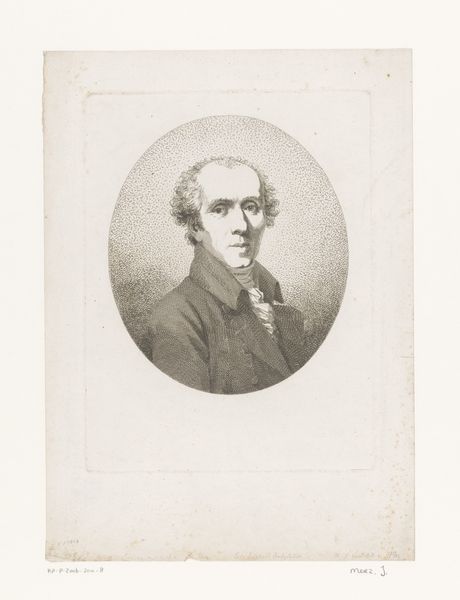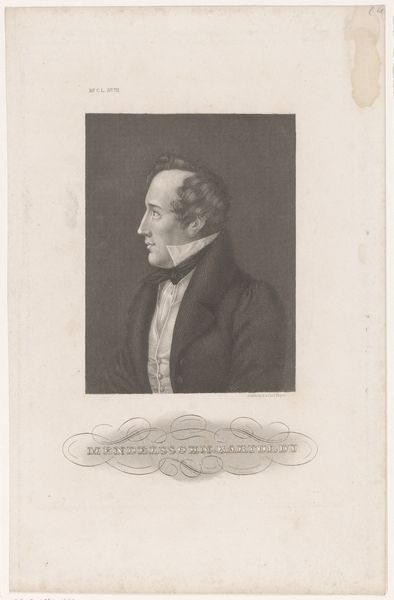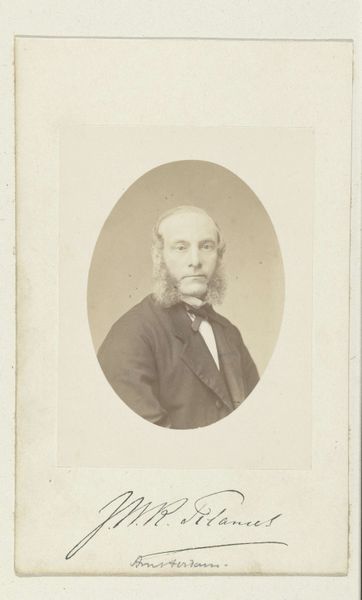
drawing, pencil
#
portrait
#
drawing
#
neoclacissism
#
pencil
#
monochrome photography
#
men
#
history-painting
#
profile
#
monochrome
Dimensions: 2 13/16 x 2 1/4 in. (7.2 x 5.8 cm)
Copyright: Public Domain
This portrait of David Howe was made by Samuel Wallin around 1850, using watercolor on ivory. At the top of the frame, we see an acorn, a symbol deeply rooted in classical antiquity. The acorn was associated with Jupiter, the Roman king of the gods, and represented strength, potential, and the origin of life. The use of the acorn carries echoes of similar motifs in other artworks from different eras, where symbols of nature convey deeper meanings. Think of the oak leaves adorning Roman emperors, signifying power and endurance. Over time, the acorn's symbolism evolved. In the Victorian era, it became a popular emblem of good luck. The image resonates with a sense of growth. The non-linear progression of this symbol shows us how such motifs are continuously recycled, re-emerging in different forms across time.
Comments
No comments
Be the first to comment and join the conversation on the ultimate creative platform.
